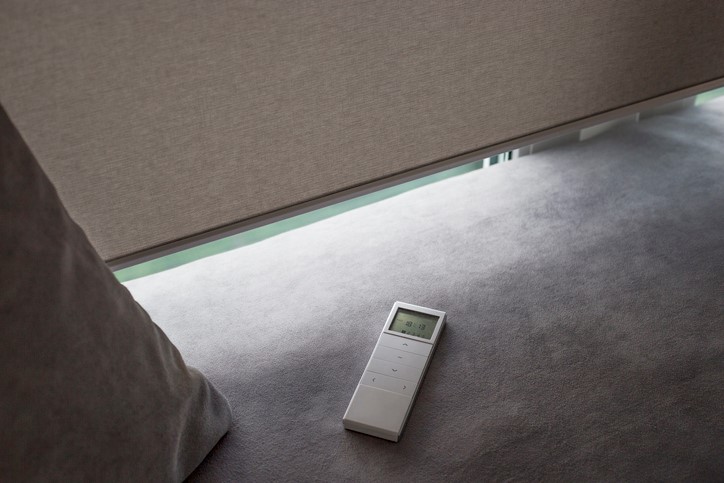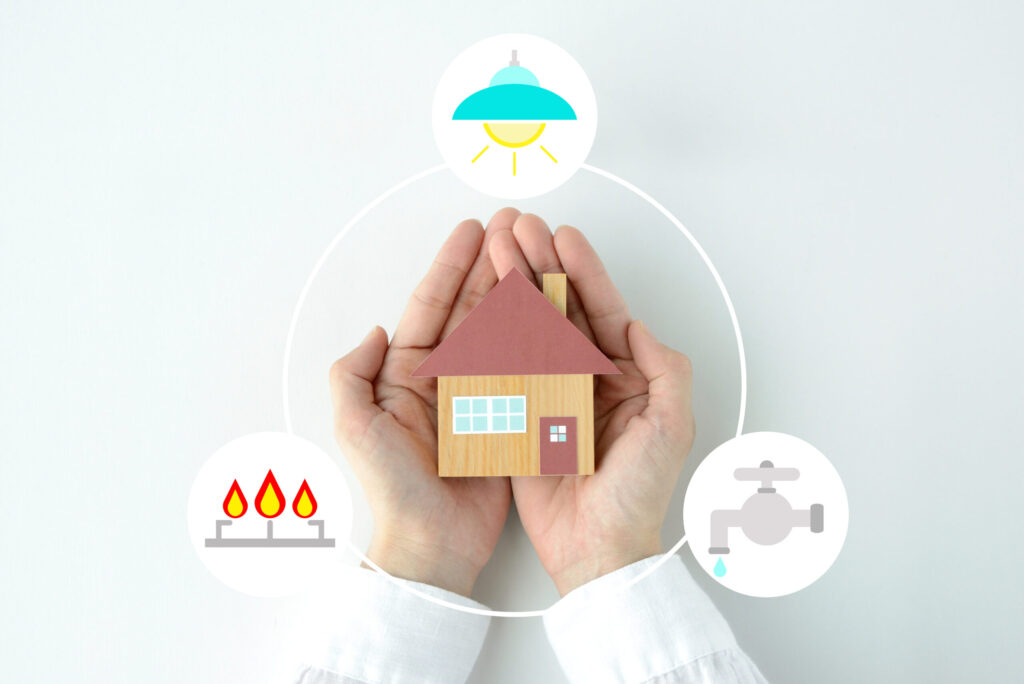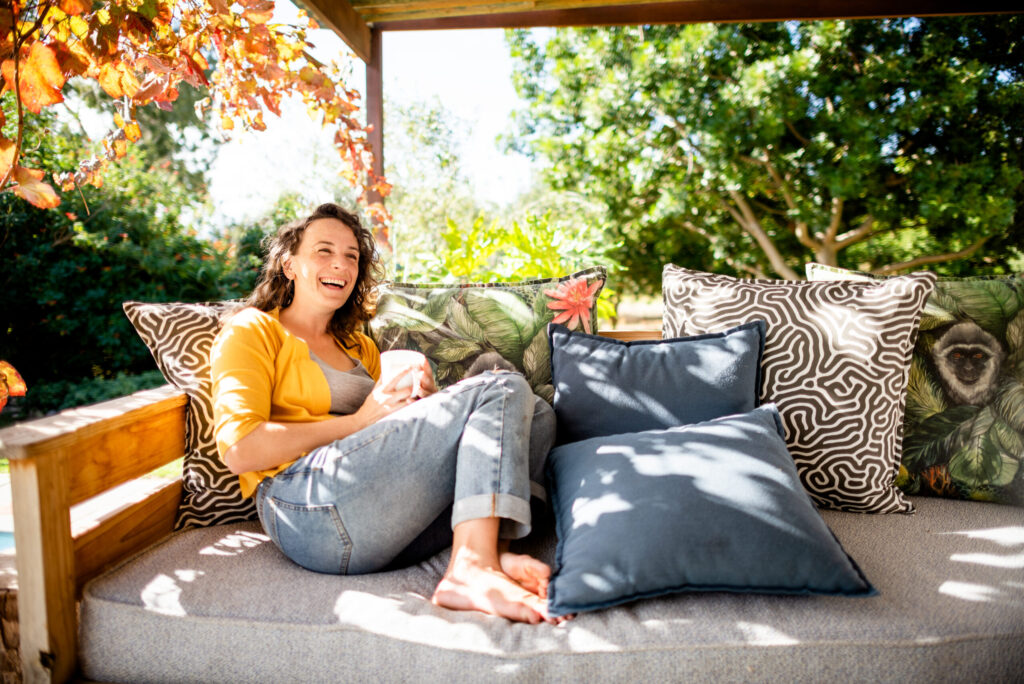Smart Home Screens: Home Automation Hacks
Home > Smart Home Screens: Home Automation Hacks
“Smart” home technology was once to be the product of science fiction. As technology advances, things like Roombas, smart fridges, and the ability to control everything in your house right from your phone are making this convenient automation science fact.
While you’re on your way to automating your home, don’t let your windows fall to the wayside. Smart home devices have a ton of customization options, with some solutions that most might not even think of when they’re setting up their systems through products like Google Home or Amazon’s Alexa. Tech-savvy window and patio screens can drastically improve your space, make your life easier, and even save you a little money, too.
Smart Shades 101
Simply put, smart shades are window shades controlled via a remote device, either a bespoke remote or through automation with Google Home or other automation apps and devices. When smartphones first began to make waves in 2007, tech giants started to try to find ways to let them help us with everything.
When it comes to tech for your windows or outdoor spaces, there are plenty of reasons to love motorized shades. Smart shades and motorized window screens integrate seamlessly into a smart home setup.
How Do Smart Shades Work?
When setting up smart shades, Google Home or other smart home automation systems seek out and connect to the motorized shade’s internal signal. An internal power supply fuels motorized screens, be it a solar panel, battery pack, or electrical socket. A command sent from your Google Home or smartphone sets the quiet motor to work opening, closing, or changing the angle of smart shades and awnings.
Timers
If you know exactly when the sun’s at just the right angle to light up your living room, keep your plants happy, or wake you up in the morning, you can also let your smart shade and Google Home system know. Through home automation, your motorized shades can rise and lower at certain times throughout the day without any additional work from you.
Wind and Sun Sensors
When connected to smart shades, Google Home, and other smart home automation systems, wind sensors can take even more of the guesswork out of lowering and raising your shades. These sensors react to elements such as temperature and wind speed to adjust your motorized shades automatically as needed.
Why does this matter? When winds are high, When winds are high, the lowered screen can act like a giant sail. These specialized wind sensors detect when your screen may be at risk of wind damage and will raise it preventatively.
As for sun sensors, detecting when the sunlight and heat are at their peak throughout the day can help boost the energy efficiency of your window screens. Heat gain will be dramatically reduced, keeping the home cool and preventing you from needing to crank up the air conditioner.
Obstacle detection sensor
Obstacle detection sensors in motorized screens prevent damage by halting or retracting the screen if they detect objects like furniture or pets in its path. This feature protects both your belongings and the screen itself, ensuring its longevity and smooth operation, thereby saving on potential repair costs.

Benefits of Smart Shades and Automation
Convenience
There is no need to interrupt your film just to lower the shades and set the mood. Simply use your phone or Google Home to command your smart shades from the comfort of your couch. Wind and sun sensors, when paired with timers, wind and sun sensors mean you’ll always have your motorized shades and awnings working at their best, when needed the most, without any additional input from you.
Energy conservation
Window screens, especially motorized and retractable solar screens, can be ideal in the fight for energy efficiency. Poorly insulated glass windows can let in enormous amounts of heat and let valuable warmth escape in the winter. By incorporating motorized sun shades into your home automation system, you can freely adjust your sun protection based on the weather, saving energy, time, and money.
Additionally, the sun’s harsh UV rays can, over time, damage your furniture, flooring, and artwork or photographs that are in the way of its view. Solar screens can effectively block out UV rays without restricting your airflow. Solar screens will decrease the light in a space.
Sun sensors also mean you can set your window coverings to close as it gets darker, right around the time your interior lights click on with the help of smart bulbs. This means you’ll save electricity by making the most of the day’s sunlight until you absolutely need to flip the switch and turn up the lights.
Privacy Enhancement
Automated smart shades add privacy to your house. Control your shades with a smartphone or voice command to quickly change your home’s visibility—A must for maintaining privacy during important moments or when living in densely populated areas. Automated settings can lower shades at sunset or other times to keep your private life private. With smart shades, you gain control over how much of your interior is visible from the outside, effortlessly maintaining your privacy without sacrificing convenience or style.
Safety
Kids and pets are prone to accidents, and making your home child-friendly gets one step easier through home automation with smart shades. Since they’re remotely operated, pulleys and cords that can pose choking hazards are taken out of the equation, and all of the mechanisms that lift and lower the shades are at the top of the shade, keeping them out of reach.
Security
While they can’t keep someone from breaking in, smart home automation can still play a part in your security systems. While you’re away, smart shades can help give the appearance of your home being occupied as they rise and lower during the day. Closing them during the day can also keep prying eyes away, even when you’re home, allowing for privacy and peace of mind.
Waking Up Relaxed
Sunlight can be an excellent way to wake up naturally – it can kickstart your body’s natural circadian rhythm, improving your sleep health. Replace your alarm clock with the most natural wake-up device around: a natural sunrise. Have your screens set up to react to a sun sensor or arranged on a timer so that they rise right when the sun is coming up. You’ll be gently awoken in a non-jarring way, allowing you to start your day on the right foot.
Expanding Your Smart Home Setup
If you’re looking for the latest ways to expand your smart home network, don’t miss out on the advantages of smart shades. They’re often overlooked, but smart shades are surprisingly easy to integrate into your Google Home or Amazon Alexa smart home dynamic.
Increased Home Value
In today’s complicated housing market, gaining a competitive edge is crucial. Buyers want to get the most bang for their buck, and having smart home technology baked right in is always a strong plus. Prospective home buyers might be swayed to make a choice about their next home if they know that yours comes with smart, motorized shades ready to connect. Plus, it’s amazing for curb appeal.
Managing Smart Shades with Google Home
If you’re worried about integrating your smart shades into your existing smart home system, then fret no more: once your motorized shades are installed, they’re easy to set up.
Your smart hub can easily connect with motorized shades that are compatible with Google Home. Once you’ve had your motorized window shades professionally installed, open your Google Home app. Select ‘add’ and connect your Screenmobile shades by searching for them within the hub.
From there, use Google Assistant to open and close the name of your motorized shades. You can say, “Hey Google, open the left retractable window shade.” or “Hey Google, close the right living room window shade by 50%.”
You can also assign your smart shades to ‘scenes’ that suit certain moods, especially when combining them with lighting and temperature automation.
Professional Installation Makes A Difference
While you automate your home with smart technology, you’ll need easy-to-operate motorized shades, ones with quiet motors, and, importantly, expert setup.
While there are ways to DIY your smart shades, there’s a considerable margin of error. Choose your favorite shades and have them installed by the professionals at Screenmobile. When you know your smart shades were installed with care, you’ll reduce your chance of mechanical mishaps or connection misfires.
Contact Screenmobile to find the motorized shade option that best suits your lifestyle and add smart shades to your automation setup today.
We are America's Neighborhood Screen Stores®
Request a Free Estimate
Complete the form below, and we will contact you to arrange a free estimate for your home.
Screenmobile.com uses cookies to improve your experience on our website. These cookies help analyze our site traffic, understand where our visitors are coming from, and may share your information with partner companies. By browsing our website, you agree to our use of cookies. Learn More.
Don’t Miss Our Latest News and Ideas for Your Home
Use the button below to sign-up for our newsletter.



